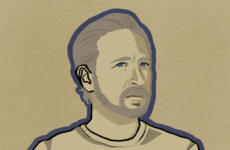The Prime Minister of India Narendra Modi’s belief that a healthy population is the key to India becoming the next global superpower inspired him to launch “Modicare.” Modicare is a government initiative which would supposedly provide free healthcare to 500 million impoverished citizens. However, a lot of work is needed before we can see Modicare actually implemented. Modicare, though a wonderful notion, is far too idealistic.
Before India can begin to provide free healthcare, they need to upgrade their hospitals and retain more doctors. Currently, 66 percent of Indians live in rural sectors, where hospitals are rare. Therefore, to receive medical care, they need to travel long distances to urban regions. Furthermore, most skilled medical professionals are drawn towards the private healthcare sector, where they work under better conditions and for higher salaries. While the people who can afford health insurance can easily access those private practices for their medical concerns, those who can’t have extremely limited ways to access the care they need. The Indian government simply can’t solve this overnight with Modicare. The minimal medical presence in rural regions should be dealt with first before the arrival of Modicare.
Though Modicare has been granted approximately 1.7 billion dollars per year in federal and state funding, that money won’t necessarily solve the lack of healthcare for India’s poorest. It will take a tremendous amount of time to build enough hospitals for the poor. In India today, there is approximately one doctor for every 1,315 persons. Moreover, many of the doctors who graduated medical school in India soon after emigrate to Western countries to practice there instead – a phenomenon known as the “brain drain.” It is estimated that as a result of Modicare’s implementation, hospitals will perform 5 million more operations and need 35 million more beds. When asked how the program will deal with the massive increase in demand, Indu Bhushan, the project’s executive officer, said, “The market will deal with that.” He makes grand proclamations about free healthcare, which is theoretically a good thing but is also unrealistic.
Moreover, giving free health care to such a large, diverse population is often very difficult and expensive. Every person has different needs, making it hard to budget money for hospitals. Catering to such groups poses a challenge to many large countries, including the United States. This is why modeling larger countries after nations with successful free health care systems doesn’t work; those societies often have significantly smaller populations. For example, Denmark has a booming free health care system, but it is comprised of only five million people, whereas India has a population of 1.3 billion. Therefore, it is impossible to make a comparison. Free healthcare varies in efficacy by country, and in India, it seems hard to speculate whether Modicare will have a lasting impact on the lack of medical care for the poor.
There are many questions to answer in terms of practicality as well. Serving such a large amount of people is impossible without fully prepped hospitals and skilled workers. Until India can achieve this, it is doubtful Modicare will be successful in granting health to the general public. Before giving the people false hope, Prime Minister Modi must take time to develop a strategy. How will he most efficiently build hospitals and train doctors? How can the government support such a financially taxing initiative? Given the extent and expense of the Modicare program, being unsure of the answers to these questions is concerning and irresponsible.




